Dragon Fruit Backyard Growing: Ever dreamt of having your own exotic fruit garden, bursting with vibrant colors and unique flavors? Imagine stepping into your backyard and plucking a perfectly ripe dragon fruit, knowing you nurtured it from a tiny seedling. It sounds like a tropical fantasy, right? Well, it’s more achievable than you think! This DIY guide is your passport to transforming your backyard into a dragon fruit paradise.
Dragon fruit, also known as pitaya, has a rich history rooted in Central and South America. For centuries, indigenous cultures have revered this fruit for its nutritional benefits and striking appearance. Now, this captivating fruit is gaining popularity worldwide, and I’m here to show you how to cultivate your very own dragon fruit right at home.
Why embark on this dragon fruit backyard growing adventure? Because nothing beats the satisfaction of harvesting your own food, especially when it’s something as visually stunning and delicious as dragon fruit. Plus, store-bought dragon fruit can be expensive and sometimes lack the freshness of homegrown varieties. With a little know-how and some simple DIY techniques, you can enjoy a bountiful harvest of these exotic fruits, impress your friends and family, and add a touch of the tropics to your backyard. Let’s get started!
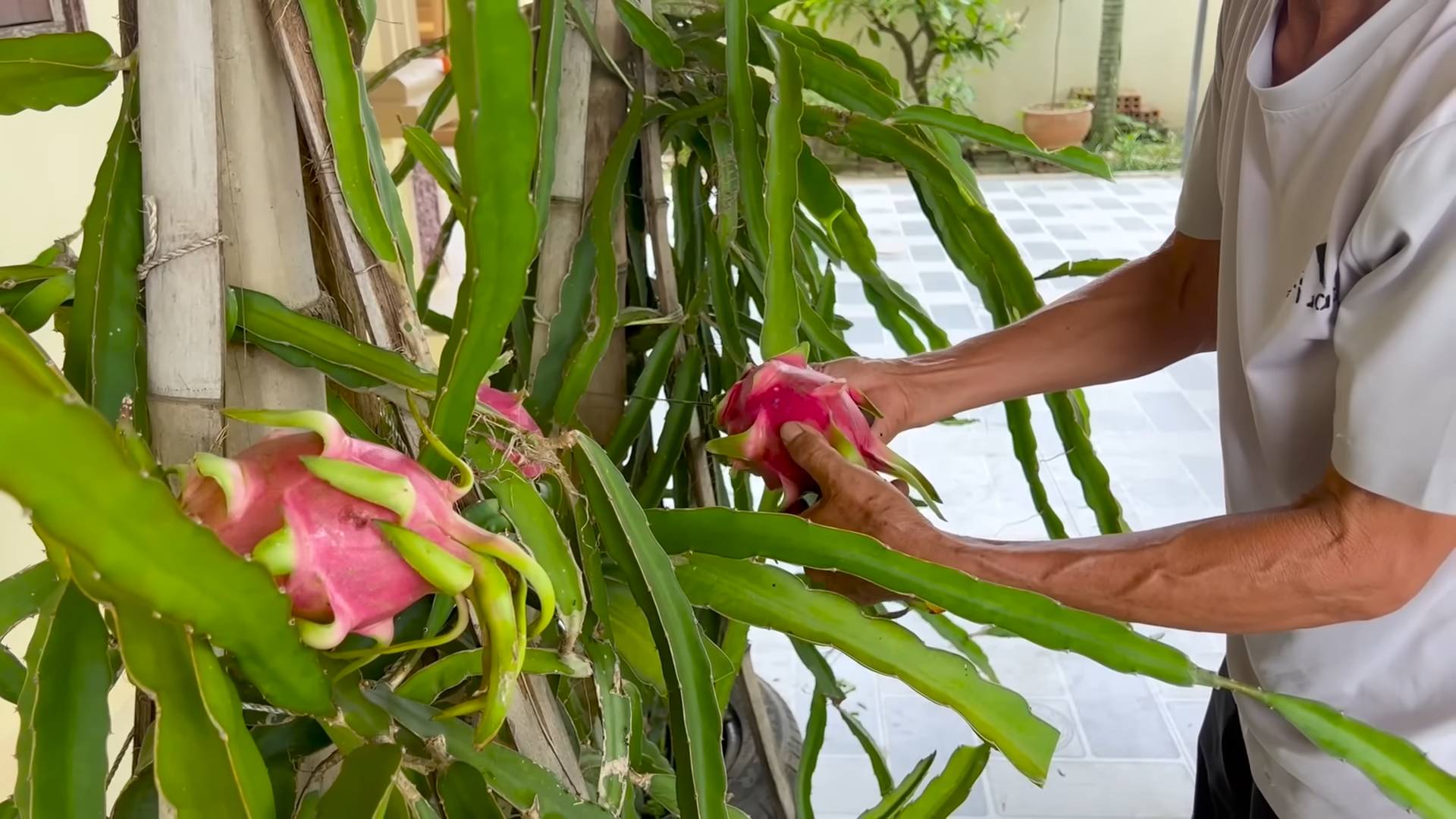
Growing Dragon Fruit in Your Backyard: A DIY Guide
Okay, so you want to grow dragon fruit in your backyard? Awesome! It’s totally doable, and trust me, the reward of harvesting your own exotic fruit is SO worth it. I’ve been growing dragon fruit for a few years now, and I’ve learned a few tricks along the way. This guide will walk you through everything you need to know, from choosing the right variety to harvesting your delicious bounty.
Choosing Your Dragon Fruit Variety
Before we dive into the nitty-gritty, let’s talk about varieties. Dragon fruit isn’t just dragon fruit! There are tons of different types, each with its own unique flavor, color, and growth habits. Here’s a quick rundown to help you choose:
* Red Skin, White Flesh (Hylocereus undatus): This is probably the most common variety you’ll find. It’s reliable, relatively easy to grow, and has a mild, slightly sweet flavor. Great for beginners!
* Red Skin, Red Flesh (Hylocereus costaricensis): This one has a more vibrant flavor and a beautiful deep red flesh. It tends to be a bit more tart than the white-fleshed varieties.
* Yellow Skin, White Flesh (Selenicereus megalanthus): This variety is known for its incredibly sweet and fragrant fruit. It’s a bit more challenging to grow, but the taste is definitely worth the effort.
* Pink Skin, Pink Flesh (Various Hybrids): There are many hybrids with pink skin and pink flesh, offering a range of sweetness and tartness. These are often very visually appealing.
Things to consider when choosing:
* Climate: Some varieties are more cold-hardy than others. If you live in an area with cold winters, choose a variety that can tolerate cooler temperatures.
* Taste Preference: Do you prefer sweet or tart fruit? White-fleshed varieties tend to be milder, while red-fleshed varieties are often more flavorful.
* Availability: Some varieties are harder to find than others. Check with your local nurseries or online retailers to see what’s available in your area.
Setting Up Your Dragon Fruit Growing Structure
Dragon fruit are vining cacti, meaning they need something to climb on. A sturdy support structure is essential for healthy growth and abundant fruit production. I’ve tried a few different methods, and here’s what I’ve found works best:
* The Single Post Method: This is the simplest and most common method. You’ll need a sturdy post (treated wood, metal, or concrete) that’s at least 6 feet tall. Bury about 2 feet of the post in the ground for stability. At the top of the post, create a “crown” or “umbrella” shape using wire or metal. This will provide a place for the dragon fruit branches to cascade down.
* The Trellis Method: This method involves building a trellis system similar to what you might use for grapes or other climbing plants. This can be a good option if you have limited space or want to create a visually appealing display.
* The Arbor Method: If you’re feeling ambitious, you can train your dragon fruit to grow over an arbor or pergola. This creates a beautiful and functional shade structure.
Important considerations for your structure:
* Strength: Dragon fruit vines can get heavy, especially when they’re loaded with fruit. Make sure your structure is strong enough to support the weight.
* Durability: Choose materials that will withstand the elements and last for many years.
* Accessibility: Make sure you can easily access the plant for pruning, fertilizing, and harvesting.
Planting Your Dragon Fruit
Now for the fun part – planting! Here’s how to get your dragon fruit off to a great start:
1. Choose the Right Location: Dragon fruit need at least 6-8 hours of sunlight per day. Choose a location in your backyard that gets plenty of sun. Also, ensure the location is well-draining. Dragon fruit don’t like soggy roots.
2. Prepare the Soil: Dragon fruit prefer well-draining soil that’s rich in organic matter. Amend your soil with compost, aged manure, or other organic materials. A slightly acidic pH (around 6.0-7.0) is ideal.
3. Planting the Cutting: Most dragon fruit are propagated from cuttings. Dig a hole near your support structure that’s large enough to accommodate the roots of the cutting. Place the cutting in the hole and backfill with soil. Gently tamp down the soil around the base of the plant.
4. Watering: Water the newly planted cutting thoroughly. Keep the soil consistently moist, but not soggy, for the first few weeks.
5. Attach to Support: Gently tie the dragon fruit stem to the support structure using soft twine or plant ties. As the plant grows, continue to tie it to the support.
Caring for Your Dragon Fruit
Once your dragon fruit is planted, it’s time to provide the care it needs to thrive.
1. Watering: Dragon fruit are relatively drought-tolerant, but they do need regular watering, especially during hot, dry weather. Water deeply when the top inch of soil feels dry. Avoid overwatering, as this can lead to root rot.
2. Fertilizing: Dragon fruit are heavy feeders. Fertilize regularly with a balanced fertilizer. I like to use a slow-release fertilizer in the spring and then supplement with liquid fertilizer every few weeks during the growing season. Look for a fertilizer with a higher phosphorus content to encourage flowering and fruit production.
3. Pruning: Pruning is essential for maintaining the shape of your dragon fruit plant and encouraging fruit production. Prune away any dead, damaged, or crossing branches. Also, prune back the tips of the branches to encourage branching and flowering. The best time to prune is after the plant has finished fruiting.
4. Pest and Disease Control: Dragon fruit are generally pest-resistant, but they can be susceptible to certain pests and diseases. Watch out for aphids, mealybugs, and scale. Treat infestations with insecticidal soap or neem oil. Root rot is a common problem, especially in poorly drained soil. Prevent root rot by ensuring good drainage and avoiding overwatering.
5. Pollination: Most dragon fruit varieties are self-pollinating, but some may benefit from hand-pollination. If you’re not getting much fruit, try hand-pollinating the flowers. Use a small paintbrush to transfer pollen from the stamen (male part) to the pistil (female part) of the flower. Dragon fruit flowers typically open at night, so you’ll need to hand-pollinate them in the evening or early morning.
Harvesting Your Dragon Fruit
The moment you’ve been waiting for! Harvesting your own dragon fruit is incredibly rewarding.
1. Knowing When to Harvest: Dragon fruit are typically ready to harvest about 30-50 days after flowering. The skin will turn from green to bright red (or yellow, depending on the variety). The fruit should also feel slightly soft to the touch.
2. Harvesting the Fruit: Use a sharp knife or pruning shears to cut the fruit from the stem. Be careful not to damage the plant.
3. Storing Your Dragon Fruit: Dragon fruit can be stored in the refrigerator for up to two weeks.
Troubleshooting Common Problems
Even with the best care, you might encounter some challenges along the way. Here are a few common problems and how to address them:
* Lack of Flowering: If your dragon fruit isn’t flowering, it could be due to a number of factors, including insufficient sunlight, lack of fertilizer, or improper pruning. Make sure your plant is getting enough sun, fertilize regularly, and prune properly.
* Fruit Drop: Fruit drop can be caused by stress, such as extreme temperatures, inconsistent watering, or pest infestations. Provide consistent care and protect your plant from extreme conditions.
* Yellowing Leaves: Yellowing leaves can be a sign of overwatering, nutrient deficiency, or pest infestation. Adjust your watering schedule, fertilize regularly, and check for pests.
* Root Rot: Root rot is a serious problem that can kill your dragon fruit plant. Prevent root rot by ensuring good drainage and avoiding overwatering. If you suspect root rot, carefully dig up the plant and inspect the roots. Remove any rotten roots and replant in fresh, well-draining soil.
Overwintering Dragon Fruit in Colder Climates
If you live in an area with cold winters, you’ll need to take steps to protect your dragon fruit from frost and freezing temperatures.
* Container Growing: The easiest way to overwinter dragon fruit in colder climates is to grow them in containers. This allows you to move the plants indoors when temperatures drop.
* Protecting In-Ground Plants: If your dragon fruit is planted in the ground, you can protect it by wrapping the plant with burlap or blankets. You can also build a temporary shelter around the plant using
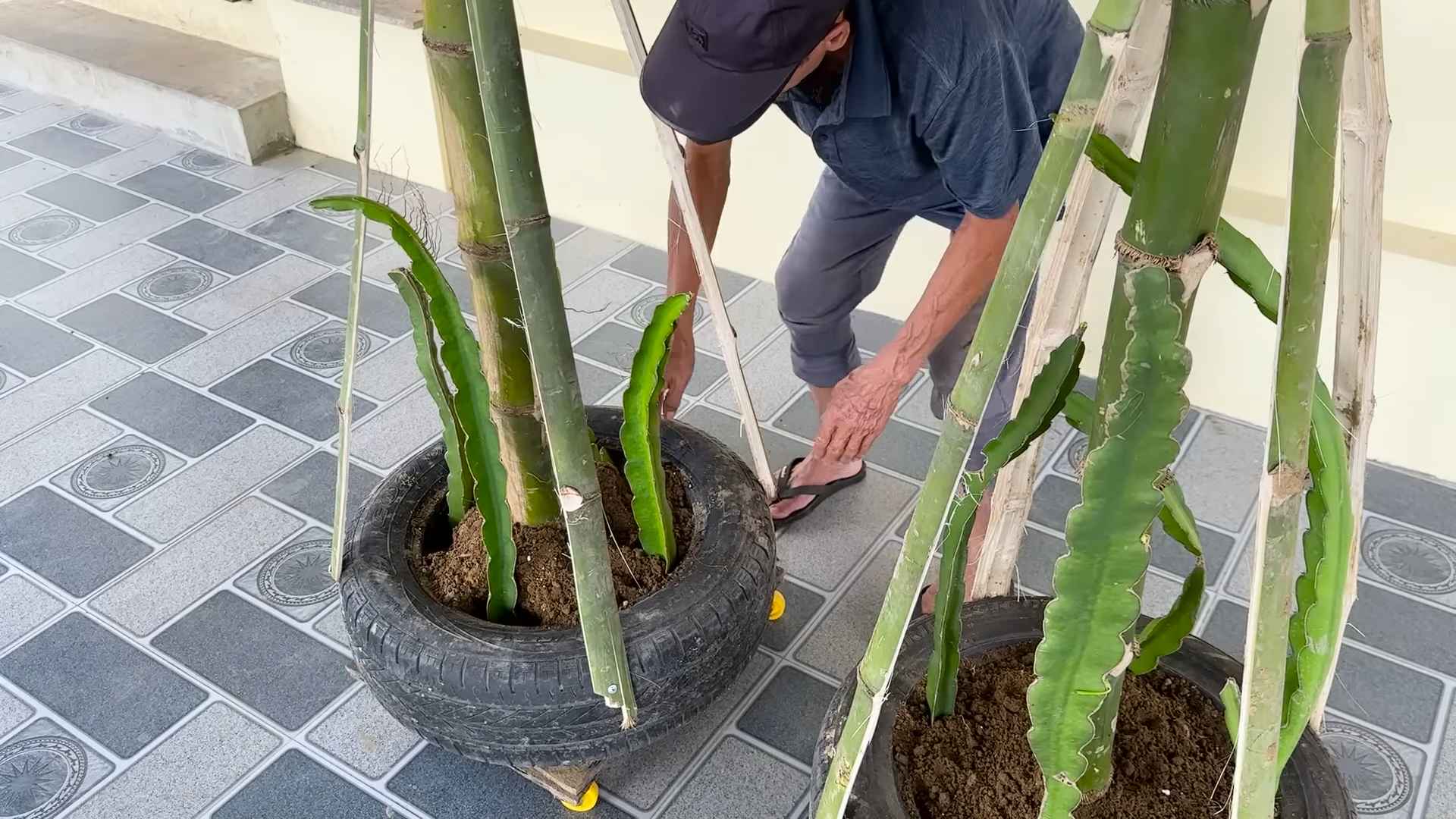
Conclusion
So, there you have it! Growing your own dragon fruit at home is not just a fun project; it’s a gateway to enjoying the vibrant flavors and health benefits of this exotic fruit right from your backyard. We’ve covered everything from selecting the right cutting to providing the ideal support structure and ensuring proper care. The initial investment of time and effort is minimal compared to the long-term rewards of harvesting your own delicious dragon fruit.
Why is this DIY dragon fruit growing trick a must-try? Because it empowers you to control the quality and freshness of your food. Store-bought dragon fruit can be expensive and often lacks the intense flavor of homegrown varieties. By cultivating your own, you’re guaranteed a supply of ripe, juicy fruit bursting with flavor and packed with nutrients. Plus, you’ll have the satisfaction of knowing exactly where your food comes from and how it was grown, free from potentially harmful pesticides or chemicals.
But the benefits extend beyond just the fruit itself. The dragon fruit plant is a stunning addition to any garden, with its unique climbing habit and beautiful, fragrant flowers that bloom at night. It’s a conversation starter, a source of pride, and a testament to your green thumb.
Don’t be afraid to experiment with different varieties of dragon fruit. There are numerous options available, each with its own unique flavor profile and color. Try growing a red-fleshed variety alongside a white-fleshed one for a beautiful and diverse harvest. You can also explore different support structures, from traditional trellises to repurposed materials like old tires or metal frames. Get creative and personalize your dragon fruit growing setup to suit your space and style.
Consider companion planting to further enhance your dragon fruit’s growth and health. Marigolds can help deter pests, while basil can attract beneficial insects. Research which plants thrive alongside dragon fruit in your specific climate and soil conditions.
Ready to embark on your dragon fruit growing adventure? We encourage you to take the plunge and experience the joy of harvesting your own exotic fruit. It’s a rewarding and fulfilling experience that will bring you closer to nature and provide you with a delicious and healthy treat.
Once you’ve started your dragon fruit journey, we’d love to hear about your experiences! Share your tips, tricks, and photos with us in the comments below. Let’s build a community of dragon fruit enthusiasts and learn from each other’s successes and challenges. Your insights could inspire others to try this amazing DIY project and discover the magic of growing their own dragon fruit. Remember, every garden starts with a single seed (or in this case, a cutting!). So, get planting and enjoy the fruits of your labor!
Frequently Asked Questions (FAQ)
What is the best time of year to plant dragon fruit cuttings?
The ideal time to plant dragon fruit cuttings is during the late spring or early summer, after the last frost has passed. This allows the cuttings to establish themselves during the warmer months and develop a strong root system before the onset of winter. In warmer climates with mild winters, you can plant dragon fruit cuttings year-round. However, avoid planting during periods of extreme heat or cold, as this can stress the cuttings and hinder their growth.
How long does it take for a dragon fruit plant to produce fruit?
Dragon fruit plants typically take 6-18 months to begin producing fruit from the time of planting a cutting. However, this can vary depending on several factors, including the variety of dragon fruit, the growing conditions, and the overall health of the plant. Providing optimal care, such as regular watering, fertilization, and adequate sunlight, can help accelerate the fruiting process. Grafted plants may produce fruit sooner, sometimes within the first year.
What kind of soil is best for growing dragon fruit?
Dragon fruit plants thrive in well-draining soil that is rich in organic matter. A slightly acidic to neutral pH (6.0-7.0) is ideal. Avoid heavy clay soils that retain too much moisture, as this can lead to root rot. Amend the soil with compost, well-rotted manure, or other organic materials to improve drainage and fertility. You can also use a commercially available cactus or succulent potting mix, which is specifically formulated for plants that prefer well-draining soil.
How much sunlight does dragon fruit need?
Dragon fruit plants need at least 6-8 hours of direct sunlight per day to thrive and produce fruit. However, in extremely hot climates, they may benefit from some afternoon shade to prevent sunburn. When growing dragon fruit indoors, place the plant near a sunny window or supplement with artificial grow lights. Insufficient sunlight can lead to stunted growth, reduced flowering, and poor fruit production.
How often should I water my dragon fruit plant?
Water dragon fruit plants deeply but infrequently, allowing the soil to dry out slightly between waterings. Overwatering can lead to root rot, which is a common problem with dragon fruit. The frequency of watering will depend on the climate, soil type, and the size of the plant. During the growing season (spring and summer), you may need to water more frequently than during the dormant season (fall and winter). Check the soil moisture regularly and adjust your watering schedule accordingly.
What kind of fertilizer should I use for dragon fruit?
Dragon fruit plants benefit from regular fertilization, especially during the growing season. Use a balanced fertilizer with a ratio of 10-10-10 or 20-20-20, or a fertilizer specifically formulated for cacti and succulents. Apply the fertilizer according to the package instructions, typically every 2-4 weeks during the growing season. Avoid over-fertilizing, as this can damage the plant. You can also supplement with organic fertilizers, such as compost tea or fish emulsion.
How do I pollinate dragon fruit flowers?
Dragon fruit flowers are typically nocturnal and are pollinated by bats and moths. However, if you live in an area where these pollinators are not common, you may need to hand-pollinate the flowers to ensure fruit production. Use a small paintbrush to transfer pollen from the stamen (male part) of one flower to the stigma (female part) of another flower. Hand-pollination is best done at night when the flowers are fully open.
What are some common pests and diseases that affect dragon fruit?
Dragon fruit plants can be susceptible to various pests and diseases, including aphids, mealybugs, scale insects, and fungal infections. Regularly inspect your plants for signs of infestation or disease and take appropriate action. Use insecticidal soap or neem oil to control pests, and apply a fungicide to treat fungal infections. Proper watering and fertilization can also help prevent pests and diseases by keeping the plant healthy and strong.
How do I prune my dragon fruit plant?
Pruning is essential for maintaining the shape and health of your dragon fruit plant. Remove any dead, damaged, or diseased branches regularly. You can also prune to control the size and shape of the plant and to encourage branching. Prune after the plant has finished fruiting, typically in the late fall or early winter. Use sharp, clean pruning shears to avoid spreading disease.
Can I grow dragon fruit in a container?
Yes, dragon fruit can be successfully grown in containers, making it a great option for those with limited space. Choose a large container with good drainage and use a well-draining potting mix. Provide a sturdy trellis or support structure for the plant to climb on. Container-grown dragon fruit plants may require more frequent watering and fertilization than those grown in the ground.

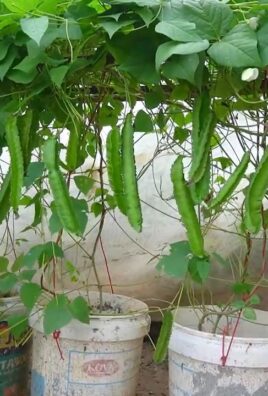
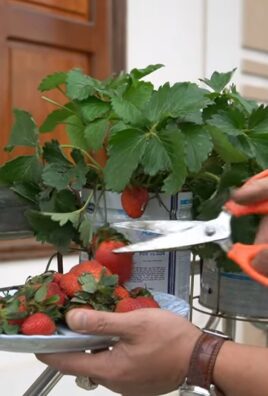
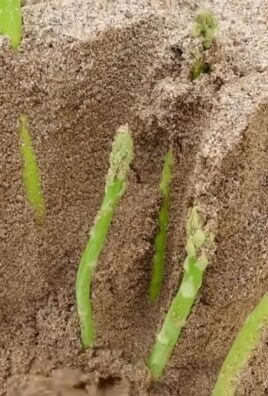
Leave a Comment